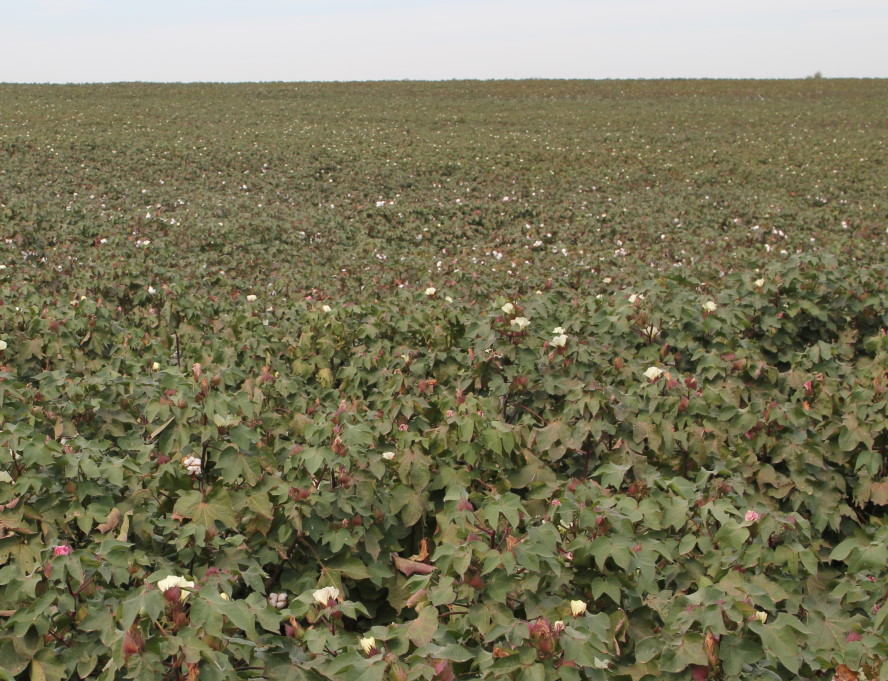
Agricultural News
Southwestern Oklahoma Cotton Farmers Hoping for Spring Rains Before Planting Time
Sun, 27 Mar 2011 22:55:38 CDT
 Farmers in Southwest Oklahoma continue to watch the weather forecasts and ponder what to do in what appears to be a very dry year for this quadrant of the state. This is the question passing through many farmers' minds today who grow crops in the North Texas, Oklahoma and Kansas portion of the Southern Plains.
Farmers in Southwest Oklahoma continue to watch the weather forecasts and ponder what to do in what appears to be a very dry year for this quadrant of the state. This is the question passing through many farmers' minds today who grow crops in the North Texas, Oklahoma and Kansas portion of the Southern Plains.
Grain and fiber prices are the highest they have been in decades; at the same time, expenses for fuel, lubrication and labor are high as well. And the potential for a serious drought, now a certainty on the High Plains, lurks just a few weeks away. Attending a meeting of cotton growers last week at Altus, Ok., the chairman asked Roger Fischer, a Frederick, Ok., producer, to open the meeting with a prayer. Fischer prayed for rain. There were a lot of "Amens," spoken by growers when Fischer finished.
So, this is the situation. Anyone who farms in this area knows one certainty is a shortage of moisture. Granted, there are times when there is too much moisture, even flooding, but as the native to western Oklahoma said, "If you hear anyone complaining about too much rain, they haven't lived here long enough."
Farmers like Fischer and his neighbor, Phil Bohl, Chattanooga, Ok., know whatever the weather provides, they can't deviate much from their regular farming technique. Both dryland farmers, they make use of the latest in farming technology like GPS direction equpment on their tractors and harvesters and notill or minimum-tillage to preserve soil moisture and nutrients and to control soil erosion.
To begin with, neither farmer grazed any winter wheat this winter, preferring to keep the crop growing for harvest when prices are good. With cotton prices higher than anytime in several past decades, they will plant the latest transgenic Roundup Ready Flex and BolGard varieties with built-in weed, insect and disease capabilities.
Their cotton will be planted either notill or minimum-till (as few passes over the fields as possible) to establish a seedbed in soil which has been kept cooler and holds more moisture and nutrients than soil which has received traditional tillage practices.
With good prices being paid for the return from their crops, they must do the best job they can to get the best yields they can at harvest. If it doesn't rain and summer comes with hot, dry weather, they will "dust in" their cotton. In other words, just plant the crop and hope for the best. There are just so many crops that will work in dryland farming and as all good farmers do, they have a definite rotation pattern where wheat is planted on one field one year and cotton the next and grain sorghum the next and so on. A good rotation program is a must to take advantage of different prices for different crops and to keep the land productive in cool and warm seasons. Rotating crops is also necessary to prevent a buildup of liabilities like soil-borne diseases and weeds tnat adhere to a particular crop.
So, is it hasn't rained by May 25, Bohl and Fischer, after putting their preplant herbicides and fertilizer in the soil, will plant their cotton. With some bags of transgenic cottonseed costing over $300 per bag, planting in a dry soil does take faith that rain will eventually come.
Knowing about the world-wide demand for cotton products and the market paying more than $1.50 per pound for lint cotton, Fischer says he will plant more cotton this year. "Most of the time I rotate my cotton ground at least ever two years," he said. "But this year, I intend to plant more cotton by returning to the same fields where I have planted cotton for the past two years."
Farther east in Tillman County, Bhl will not only plant his usual cotton crop, but will also plant more cotton as well. "We are taking on more acreage by custom farming for other people," he said. "This will allow us to have more cotton when prices are high."
But there is no free lunch for these farmers either. Diesel fuel for tractors and harvesters costs more now. Other inputs have increased as well. One of the main reasons there are fewer farmers today is fewer people are willing to take on the responsiblilty of such a task. Fewer lending agencies are willing to trust anyone except those who have proven themselves capable of bringing in a crop despite high costs and adverse weather conditions. One farmer said their is no greater gamble than farming today, particular dryland farming where the grower has no control over the most important factor, rain.
Our thanks to Vic Schoonover, who writes TALKIN' COTTON, which is produced by NTOK Cotton, a cotton industry which supports and encourages increased cotton production in the Rolling Plains of North Texas, Oklahoma and Kansas. For more information on the cotton scene, click here for the NTOK Cotton website.
WebReadyTM Powered by WireReady® NSI
Top Agricultural News
More Headlines...




















